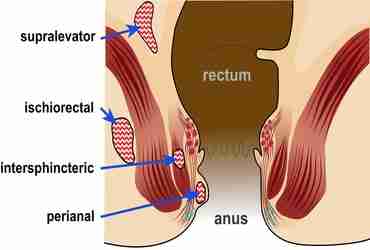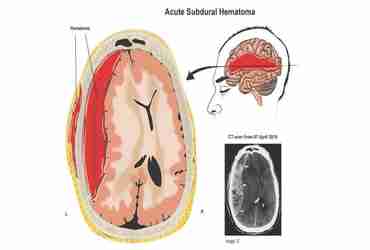
Hemorrhoids Piles
Swollen and inflamed veins in the rectum and anus that cause discomfort and bleeding. Haemorrhoids are usually caused by straining during bowel movements, obesity or pregnancy. Discomfort is a common symptom, especially during bowel movements or when sitting. Other symptoms in wclude itching and bleeding. A high-fibre diet can be effective, alongith stool softeners.

Ano Rectal Bleeding
Anal bleeding is nearly always due to benign conditions, usually haemorrhoids (“piles”) or fissures. The blood is usually bright red and fresh as though you had been cut. It usually occurs when your bowel has been moved but is sometimes seen as a stain on the bedclothes or underwear. it will not be mixed in with it Bleeding from a fissure may be quite painful while hemorrhoids are either painless or associated with only mild discomfort.

Fistula in Ano
An infected tunnel between the skin and the anus. An anal fistula is an infected tunnel between the skin and the anus, the muscular opening at the end of the digestive tract. Most anal fistulas are the result of an infection in an anal gland that spreads to the skin. Symptoms include pain, swelling and discharge of blood or pus from the anus. Surgery is usually required to treat anal fistula.

Anal itching - Pruritus Ani
Anal itching is a common condition. The itch, situated in or around your anus, is often intense and may be accompanied by a strong urge to scratch. You may find anal itching to be embarrassing and uncomfortable. anal itching has many possible causes, such as skin problems, hemorrhoids, and washing too much or not enough. If anal itching is persistent, talk with our doctor. With proper treatment and self-care, most people get complete relief from anal itching.

Ischiorectal Abscess
Ischiorectal abscesses are the next most common type. These abscesses form when suppuration transverses the external anal sphincter into the ischiorectal space. An ischiorectal abscess may traverse the deep postanal space into the contralateral side, forming a so-called horseshoe abscess. A blocked anal gland, a sexually transmitted infection (STI), or an infected anal fissure can cause anal abscesses. Some other risk factors include: Crohn's disease or ulcerative colitis.

Anal Stenosis
Anal stenosis, which is a narrowing of the anal canal that makes it difficult to pass stool, can lead to serious complications if left untreated. Also referred to as anal stricture, this condition occurs when the muscles in the anus – which expand and contract to regulate the passage of fecal material. This can be due to a hard, dry bowel movement or loose, frequent bowel movements. Patients with a tight anal sphincter muscle are more likely to develop anal fissures.

Abscess
A confined pocket of pus that collects in tissues, organs or spaces inside the body. When an area in the body becomes infected, the body's immune system sends white blood cells to fight the infection. These cells collect and combine with the damaged tissue and germs, creating liquid called pus. An abscess is characterised by a painful, swollen lump that's filled with pus.

IBS (Irritable bowel syndrome)
An intestinal disorder causing pain in the stomach, wind, diarrhoea and constipation. The cause of irritable bowel syndrome isn't well understood. A diagnosis is often made based on symptoms. Symptoms include abdominal pain, bloating, diarrhoea and constipation. Some people can control their symptoms by managing diet, lifestyle and stress.

Fissure in Ano
Anal fissure may occur when passing hard or large stools. An anal fissure can cause pain and bleeding during bowel movements. This condition usually heals on its own in four to six weeks. Common treatments include dietary fibre and stool softeners, as well as creams to the affected area. Fissures typically cause severe pain and bleeding with bowel movements.

Rectal Polyps
A small clump of cells that forms on the lining of the colon or rectum. Most are harmless, but some can develop into cancer. Colon polyps often don't cause symptoms. Regular screening tests, such as colonoscopy, can help ensure that polyps are identified and removed before they can develop into cancer.

Thrombosed Hemorrhoids - Anal
Share on Pinterest A thrombosed hemorrhoid is a hemorrhoid that is filled with blood clots. A person's anal canal is lined with blood vessels. When these blood vessels become dilated or swollen, they can form a hemorrhoid. Hemorrhoids can be on the inside of the anal passage or form on the outside of the anus.

Rectal Prolapse
Rectal prolapse typically occurs in older women, but it can occur in men and women of any age. Risk factors include multiple births and vaginal delivery. Rectal prolapse can create an inability to control bowel movements, causing stool to leak from the rectum. Early management includes fluids and pelvic floor exercises. Most people will eventually need surgery.

Hematoma
The term hematoma describes an area of blood that collects outside of the larger blood vessels. Hematomas are commonly due to injuries or trauma in the area. An injury can cause blood vessel walls to break, allowing blood to make its way into the surrounding tissue. Bruising can have causes that aren't due to underlying disease.

Constipation
Constipation refers to bowel movements that are infrequent or hard to pass. The stool is often hard and dry. Other symptoms may include abdominal pain, bloating, and feeling as if one has not completely passed the bowel movement. Complications from constipation may include hemorrhoids, anal fissure or fecal impaction.

Ulcerative colitis & Crohn's Disease
In Crohn's disease, there are healthy parts of the intestine mixed in between inflamed areas. Ulcerative colitis, on the other hand, is continuous inflammation of the colon. Ulcerative colitis only affects the inner most lining of the colon while Crohn's disease can occur in all the layers of the bowel walls. This condition causes long-lasting inflammation and sores (ulcers)

Anal Discharge
Rectal discharge is the release of any discharge from the anus that is not stool or blood. Rectal discharge can occur for many reasons, including anal fissure, anal fistula (an abnormal connection between two organs) or abscess, other infections including sexually transmitted diseases, or chronic inflammatory diseases.

Pilonidal Sinus
An abnormal skin growth located at the tailbone that contains hair and skin. The cyst is usually located near the tailbone and can become easily infected. Symptoms of an infected cyst include pain, reddened skin or drainage of pus or blood. Treatment involves drainage and surgical removal of the cyst.

Anal Cryptitis & Papilitis
[1] papillitis hypertrophicans, or "cat tooth", are the fine points of projections of the extreme upper end of anal canal skin at the mucocutaneous junction. [2] Occasionally, a red edematous papilla is encountered with local pain and a purulent discharge from the associated crypt. This condition2 is called as ′papillitis′ with `cryptitis.′

Anal Condyloma
A small bump on the genitals caused by a common sexually transmitted infection. Genital warts are a common sexually transmitted infection caused by the human papillomavirus (HPV). The characteristic symptom is a small bump on the genitals.

Ano Rectal Cancer
Anal cancer is an uncommon type of cancer that occurs in the anal canal. The anal canal is a short tube at the end of your rectum through which stool leaves your body. Anal cancer can cause signs and symptoms such as rectal bleeding and anal pain.